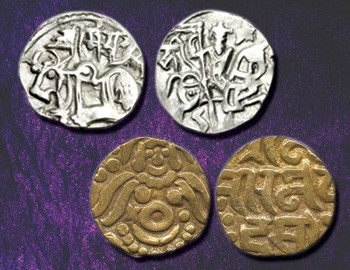

Sometimes we tend to forget that humans are not just the only inhabitants of the earth. And that has led to the destruction of forests which in turn has affected wildlife. This rather heartless act of human beings has also resulted in the extinction of some beautiful species. I personally feel that in this world of money and economic advancement, one should never forget how beautiful nature is and should try to live in sync with it. Let’s look at some countries who follow the same belief and have gone ahead to print some fabulous illustrations of wildlife on banknotes.
Continue reading Wildlife on Banknotes from Around the World
The Mintage World Team comprises of experts, researchers and writers from the field of Philately, Notaphily and Numismatics who try to shed light on some of the most interesting aspects of coins, banknotes and stamps from not just India but across the globe as well.

Coins are a form of legal tender first used c. 6th century BCE in India. The need arose for a stable mode of payment and coins have risen gloriously to the occasion. Previous methods of payment have been replaced over time. But what has enabled coins to be used for payment for over two millennia? The stability in the value of precious metals can only go so far. But when combined with the authentication done by governing authorities, coins become a stable and reliable form of money.
Continue reading Numismatic Continuity in Indian Coinage
The Mintage World Team comprises of experts, researchers and writers from the field of Philately, Notaphily and Numismatics who try to shed light on some of the most interesting aspects of coins, banknotes and stamps from not just India but across the globe as well.

Though usually coins are circular in shape with emblems and depictions of emperors or important personalities, some countries of the world have gone out of their way to issue some really interesting ones. Let’s explore some of the most unusual coins of the world.
Continue reading The Most Unusual Coins of The World
The Mintage World Team comprises of experts, researchers and writers from the field of Philately, Notaphily and Numismatics who try to shed light on some of the most interesting aspects of coins, banknotes and stamps from not just India but across the globe as well.
The Mintage World Team comprises of experts, researchers and writers from the field of Philately, Notaphily and Numismatics who try to shed light on some of the most interesting aspects of coins, banknotes and stamps from not just India but across the globe as well.

As seen in the previous blog, the early coinage of Kushan had a great Greek iconographic influence and were struck depicting the Greek deities. However as the Kushans created a vast Empire under Kanishka I the iconographic imagery, as well as the deities on Kushan coins, became more and more Indian. The religious pantheon under Kanishka I and Huvishka drew heavily from the pre-Zoroastrian Iran and the Hindu and Buddhist pantheon. The coins of Later Kushan rulers mostly depicted Oesho (Indian) and Ardochsho (Iranian). Scholars are of the opinion that the iconography introduced by the Kushan in their coins was continued by many dynasties that followed the Kushans.
Continue reading Deities on Kushan Coins – Part II
The Mintage World Team comprises of experts, researchers and writers from the field of Philately, Notaphily and Numismatics who try to shed light on some of the most interesting aspects of coins, banknotes and stamps from not just India but across the globe as well.